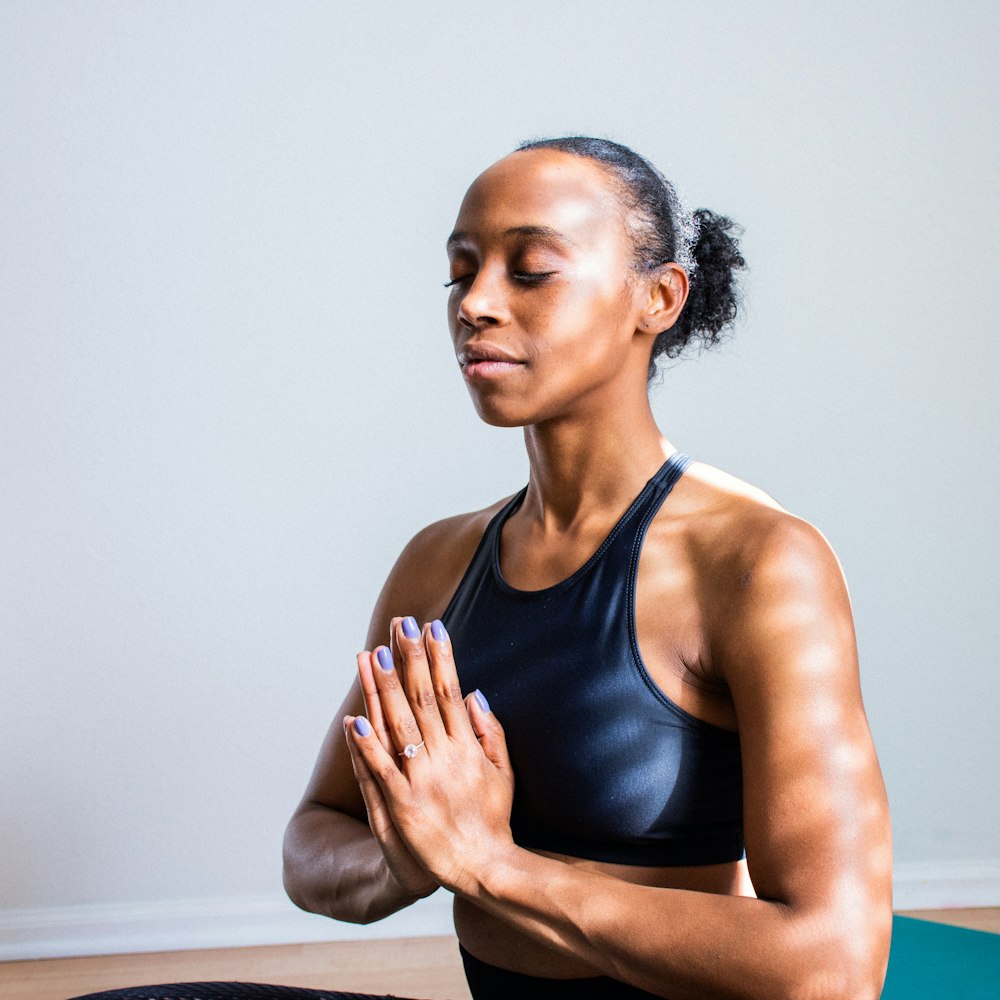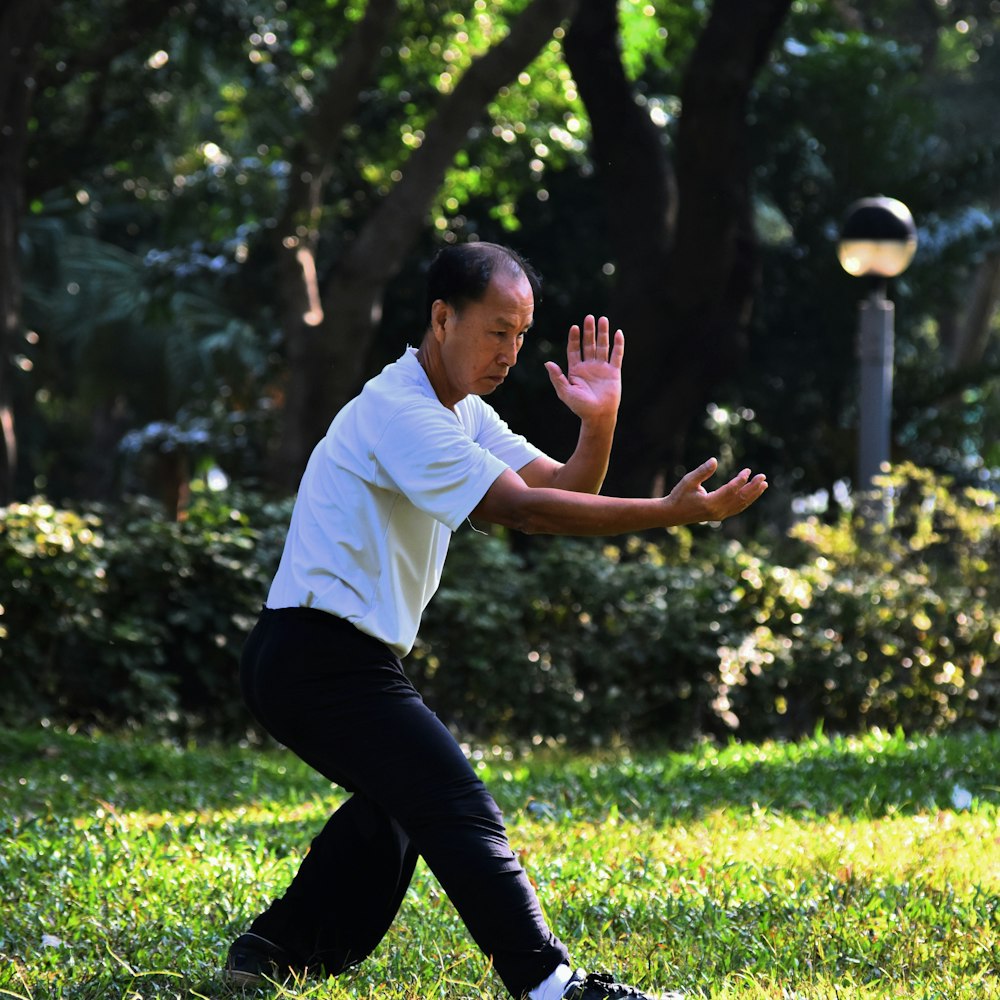
Meditation is a practice where an individual uses a specific technique or set of techniques to induce a specific state, mode or consciousness. Different types of meditation employ a variety of different methods with various intentions. Meditation is difficult to define because there are a variety of different practices and traditions. This lesson will provide a very brief overview of meditation as an ancient and modern practice.
Lesson Objectives:
- identify meditation as a diverse set of practices from a wide variety of different ancient and modern traditions.
- recognize various techniques and intentions associated with meditation
- explore the any style of meditation and write a reflection of the experience
What is Meditation?

This lesson will refer to meditation as ‘ a technique or series of techniques employed to alter cognitive and/or emotional states and conditions in an effort to improve well being.’ However, there is no single definition or criteria for ‘meditation’ as a practice within the contemporary scientific community. A 2009 study noted a “persistent lack of consensus in the literature” and a “seeming intractability of defining meditation.” Meditation is difficult to define because it covers a wide range of dissimilar practices in different traditions. In popular usage, the word “meditation” and the phrase “meditative practice” are often used to refer to a variety of different techniques and intentions across many cultures throughout history.
Some of the difficulty in precisely defining meditation has been in recognizing the particularities of the many various traditions. Throughout history, numerous teachers have taught distinct methods and this contributed to a flourishing of different approaches, techniques and intentions for meditative practice. In some cases, meditation is not a solitary practice, but it is just one part of a complex system of beliefs and practices. For example, some Christian monks meditate daily, yet they also observe codified rules and live together in monasteries in specific cultural settings that go along with their meditative practices. This makes it important to situate a particular type of meditation practice within its specific social and historical context.
Meditation in History

The English term meditation is derived from Latin meditatio, “to think, contemplate, devise, ponder”. The use of the term meditatio as a formal process of meditation dates to the 12th century Christian monk Guigo II. However, different forms of meditation have been practiced in several different religious traditions for nearly 4,000 years. Eastern spiritual practices, referred to as dhyāna in Hinduism and Buddhism and which comes from the Sanskrit root dhyai, meaning to contemplate or meditate. In most cases, meditation was considered a means toward spiritual enlightenment and self-realization. The earliest records of meditation come from the Hindu traditions of Vedantism, and meditation has also played a role in many Buddhist, Christian, Islamic and Jewish traditions throughout history as well as in more recent religious and spiritual movements.
Through globalization and the worldwide spread of culture, a variety of new and non-religious meditation techniques emerged with many non-spiritual applications. Meditation has been integrated into health and wellness sectors, business, sports, mental health, communication, human resources, and many other secular sectors. Current research is investigating the psychological, neurological and cardiovascular effects of meditative techniques.
Meditation Techniques and Intentions
The proliferation of meditative practices has generated numerous techniques and approaches to meditation as well as a variety of reasons to engage in meditation. Some traditions adhere to a strict set of techniques while others may employ one or more as the need arises. Individuals may meditate as a solitary practice while others meditate as a group. Meditation may occur on a well-defined daily schedule for a specific amount of time or it may take place whenever an individual desires to meditate.

Some techniques may include (but are not limited to):
- focusing the mind on a particular object, thought, or activity
- employing intentional breathing patterns
- engaging in or refraining from specific movements or sounds
- listening to specific sounds or music
- chanting alone or as a group
- engaging in repetitive words or movements
The various intentions of meditation may include (but are not limited to):
- improving attention or awareness skills
- improving mental clarity
- reducing stress and anxiety
- encouraging calm and stable states
- improving sleep patterns
- alleviate depression and improve well-being
- anger management and self-control
Increasing awareness about the benefits of meditation has led to the proliferation of meditation adapted to different sectors of contemporary life such as business, professional development, and sport. In the video below, LeBron James addresses the importance of ‘strength of mind.’
Exploring Meditation Practices
The plethora of different meditation techniques, practices and traditions makes it easy to find a form that fits personal preferences, beliefs and lifestyles.
Meditation for Sport
Meditation strategies have infused of the fields of sport and human performance. Many successful coaches and athletes use meditation practices to increase competition by going beyond training the body, but to also train the strength of mind for better habits, techniques and the tools of mental fitness. A wide variety of sports meditation videos and apps are available for free and for a fee, and many include notable champions such as Kobe Bryant, LeBron James, Michael Jordan, and Tom Brady. (Read ‘Tom Brady credits six Super bowl wins to regular yoga and meditation practice,’ for more information.) The short video below by LeBron James explains his meditation training exercises on the Calm app.
Meditation for Business
Meditation is becoming increasing popular in the business and finance sectors which oftentimes include a lot of stress, risk, and heavy workloads. Meditation is believed to increase the cortical thickness in the hippocampus, which runs the memory as well as the ability to learn new things. This helps with long term memory which is important during activities such as giving a presentation to closing a sale. To learn more, read the article in Forbes magazine, ‘The benefits of meditation in business,’ by Stephanie Denning.
Meditation for Empowerment
Empowerment-based meditation practices focuses on inspiring ideas, philosophies and wisdom for overcoming challenges. Most practices aim to build confidence toward making choices and decisions that support life intentions and personal goals. The video below is an example of an empowerment-based meditation for affirming self-worth.
Meditation for Sleep
The Fantasy lesson briefly addressed the importance of sleep in cognitive functioning. Sleep is also critical for emotional and mental well-being. The video below is one example of a meditation technique designed to enhance sleep. Additional resources are also available from the MIT Sleep Institute and Dan Jones’ hypnotic sleep stories for adults.
Meditation in Christianity
In many Christian traditions, meditation in the form of contemplative prayer aims to achieve a close spiritual union with God. Both Eastern and Western Christian teachings have emphasized the use of meditative prayers as an element in increasing one’s knowledge and relationship with God. The video below is one example of contemplative prayer.
Meditation in Judaism
Historically, Jewish mystics have viewed meditation as leading to devekut (cleaving to God). Hebrew terms for meditation include hitbodedut (or hisbodedus, literally “self-seclusion”) or hitbonenut / hisbonenus (“contemplation”). Contemporary Jewish meditation includes practices intended to settle the mind, foster introspection, enhance emotional insight, contemplate divine names, or concentrate on philosophical, ethical or mystical ideas. Jewish meditation may include unstructured, personalized Jewish prayer, or be part of structured Jewish services. The video below provides an introduction to guided Jewish meditations.
Meditation in Islam
Meditation is at the core of Islamic spirituality as a deliberate and self-led mental activity to surrender. Reflection, Taffakur, means to think intentionally, constructively, purposefully and positively. Murāqabah (“to observe”) is a core concept in Sufi orders. Through murāqabah a person watches over their (spiritual) heart and gains insight into the heart’s relation with its creator and its own surroundings. The video below explains the role of mindfulness, or Dhikr, in Islamic practice.
Meditation for Anxiety
Research shows that a consistent meditation practice reprograms neural pathways in the brain and this can improve the ability to regulate emotions. Meditation for anxiety aims to increase awareness of thoughts and storylines that induce-anxiety in order to increase control over mental processes that create stress and anxious feelings. The 10-minute guided meditation below is an example of meditation for anxiety.
Meditation and the Humanities
Meditation offers a quick, easy and cost-free means to enhance mental processes, improve the quality of sleep, increase control of unwanted emotions and better overall wellbeing. The examples presented here represent only a few of the wide variety of meditation techniques and practices. To learn more about meditation, many schools throughout the United States offer free classes and there are several free online videos and phone apps to assist in developing a daily practice.
References and Resources
- “Meditation in Judaism, Christianity and Islam: Technical Aspects of Devotional Practices”. In Halvor Eifring (ed.), Meditation in Judaism, Christianity and Islam: Cultural Histories, London: Bloomsbury Academic, 2013, pp. s. 3-13
- “Meditation and happiness: Mindfulness and self-compassion may mediate the meditation–happiness relationship” (PDF). Personality and Individual Differences. 93: 80–85.
- Feuerstein, Georg. “Yoga and Meditation (Dhyana).” Moksha Journal. Issue 1. 2006.
- Mirahmadi, Sayyid Nurjan; Naqshbandi, Muhammad Nazim Adil al-Haqqani; Kabbani, Muhammad Hisham; Mirahmadi, Hedieh (2005). The healing power of sufi meditation. Fenton, MI: Naqshbandi Haqqani Sufi Order of America.
- Lutz, A.; Dunne, J. D.; Davidson, R. J. (2007). Zelazo, P.; Moscovitch, M.; Thompson, E. (ed.). “Meditation and the Neuroscience of Consciousness: an Introduction in Cambridge Handbook of Consciousness” (PDF). Cambridge University Press.
- Daniel Goleman, The meditative mind: The varieties of meditative experience, worldcat.org:
- Lutz, Antoine; Slagter, Heleen A.; Dunne, John D.; Davidson, Richard J. (April 2008). “Attention regulation and monitoring in meditation”. Trends in Cognitive Sciences. 12 (4): 163–69.
- Shonin, Edo; Van Gordon, William (2016). “Experiencing the Universal Breath: A Guided Meditation”. Mindfulness. 7 (5): 1243.
- Perez-De-Albeniz, Alberto; Jeremy Holmes (March 2000). “Meditation: concepts, effects and uses in therapy”. International Journal of Psychotherapy. 5(1): 49–59.
- “Religions – Buddhism: Meditation”. BBC.
- “Chanting Hare Krishna on Japa Beads”. Krishna.org – Real Krishna Consciousness. 2019-09-29.
- Lew, Alan (2007-07-31). Be Still and Get Going: A Jewish Meditation Practice for Real Life. Little, Brown.
- Michaelson, Jay (June 10, 2005). “Judaism, Meditation and The B-Word”. The Forward.
For Discussion in Canvas
For extra credit: Attend any guided meditation class, select one of the guided meditation videos in this lesson, or find any guided meditation video or app that suits your interests. Participate in the meditation process and write a minimum 250-word description of your experience: Did the meditation come from a specific tradition? What techniques did the meditation practice use? What were the intentions of the meditation practice? What are your overall impressions of the experience? Be sure to respond to at least two other student posts and compare your experiences.
